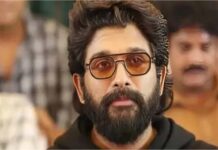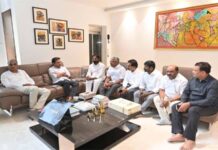While leaders across the world are predicting another two terms for BJP leader Narendra Modi ,the leaders in the opposition and some seniors in BJP also are pondering as to who would come to stop Modi.
The Congress has called for a grand alliance of opposition parties to defeat Prime Minister Narendra Modi and the BJP in the 2019 Lok Sabha elections.They are trying to gather support from the regional parties also.
And most importantly, if the grand alliance is firmed up, who will be the Prime Ministerial face of a combined opposition is the other question.

He is named as the iron leg for the Congress party, UP leaders say he has spoiled the chances of Akhilesh. BJP leaders want him to be the leader of the combined opposition so that they can win. Yes we are talking about Rahul Gandhi.
Being the leader of the largest opposition party, Rahul Gandhi is the strongest claimant. He has not posted huge electoral wins and has also been unable to overcome the tag of a “reluctant politician”. But – given the ego battles amongst the regional leaders – Gandhi could still emerge as the consensus candidate.
Rahuls obvious disadvantage is his unacceptability among the masses. The Congress vice president might even be forced to play second fiddle to any other popular leader. The possibility of Gandhi nominating a party colleague cannot be ruled out.
Seen as a leader who could give a tough fight to Modi, Kejriwal shares a good equation with West Bengal chief minister and Trinamool Congress president Mamata Banerjee, Janata Dal (United) chief Nitish Kumar and some Left leaders as well.

He is among the first of the next-gen leaders to have made a mark by playing on the theme of “aspirational India”. But, after the initial burst of popularity, his image as a potential challenger to Modi has been considerably weakened.
With established credentials of a politician who can deliver good governance, Nitish Kumar has the best chance to emerge as the face to challenge Modi in the 2019 elections.
After the success of the “Bihar model” — when the RJD-JDU-Congress combine defeated the BJP in the 2015 assembly elections –Nitish Kumar is considered a potential Prime Ministerial candidate. On the flip side, he lacks the support base of a dedicated cadre and is not seen as a team player.

The grand old sire of the socialist ideology, Mulayam can also be considered a compromise candidate for the leadership job in a proposed alliance. Yadav has the struggles of his past in his favour, but has been devastated by a double whammy of circumstances in recent months.
His image and status first took a hit when his son Akhilesh replaced him as the Samajwadi Party chief. The subsequent drubbing of the Samajwadi Party at the hands of the BJP in the recent UP assembly elections appears to have done him in further. But politics – like cricket – is a game of glorious imponderables.
Didy the West Bengal chief minister has the spirits and courage to match Modi’s firepower. She is today one of the rare Indian politicians who have a strong mass base support. She also has had stints as a cabinet minister at the Centre.
But – to her disadvantage – her appeal has remained restricted to West Bengal. But, if circumstances so warrant, the Opposition camp might well be tempted to field Mamata against Modi.

If the opposition camp aims at recreating the political tapestry around the slogan of “haves versus have-nots”, Bahujan Samaj Party leader Mayawati could well emerge the face of the struggle. Her party may well have been decimated in the 2014 parliamentary and 2017 assembly elections of UP, but her support base at the ground level has not been radically transformed.
The BSP is also the only regional party to have some token presence in almost all states of the Hindi heartland. However, the Dalit leader lacks negotiating skills and is not considered an accommodating leader.
With a proven record of governance, the three-time Odisha chief minister Naveen Patnaik could well emerge the dark horse. He is non-controversial and is very much seen as a clean leader.














